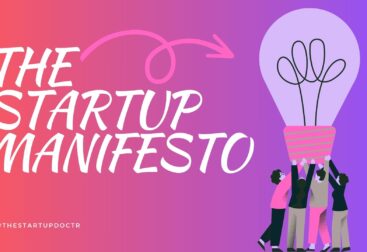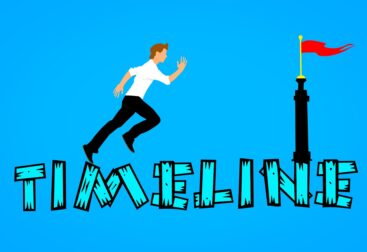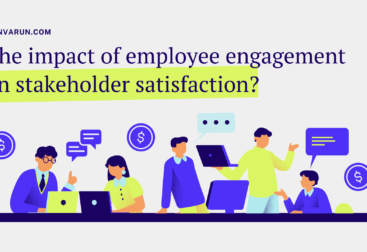Effective decision-making and problem-solving are crucial skills for any leader. In today’s fast-paced world, leaders must be adept at navigating complex challenges and making informed choices that benefit their teams and organisations.
You need a clear vision, an understanding of the tides, and the ability to make swift, informed decisions to keep your vessel—and crew—on course. Let’s dive into how you can excel at decision-making and problem-solving with some compelling examples, practical tips, and perhaps a splash of humour to keep things interesting.
1. Understand Context
The Importance of Context
Imagine you’re the captain of a ship navigating through turbulent waters. The key to a safe journey lies in understanding the context: the weather conditions, the ship’s capabilities, and the crew’s expertise. Similarly, in leadership, understanding the context is essential for effective decision-making and problem-solving. It’s about grasping the bigger picture and the nuances that can influence outcomes.
Case Study: The Nokia Saga
Nokia’s fall from being the leader in the mobile phone market to becoming irrelevant is a classic example of failing to understand the context. While Nokia focused on hardware, the market shifted towards software and user experience. By not recognizing this shift, Nokia made decisions that led to its downfall. This underscores the importance of being attuned to industry trends, competitive landscapes, and technological advancements.
Practical Tips
1. Stay Informed: Regularly read industry reports, attend conferences, and engage with thought leaders.
2. Engage with Your Team: Your team members can provide valuable insights into the day-to-day realities of your organization.
3. Customer Feedback: Direct feedback from customers can highlight changing preferences and needs.
2. Gather Information
The Power of Information
Consider Sherlock Holmes, the master detective. His success hinges on gathering minute details and piecing them together to solve complex cases. For leaders, a thorough understanding of the situation is built on gathering comprehensive information from diverse sources.
Example: The Challenger Disaster
The Challenger space shuttle disaster in 1986 serves as a grim reminder of the consequences of insufficient information gathering. Engineers had concerns about the O-rings in low temperatures, but these warnings were not adequately communicated to decision-makers. This tragedy highlights the need for transparent information flow and meticulous data collection.
Strategies for Effective Information Gathering
1. Conduct Research: Use a mix of qualitative and quantitative methods to gather data.
2. Consult Experts: Don’t hesitate to seek advice from subject matter experts.
3. Use Technology: Leverage data analytics tools to make sense of large volumes of information.
3. Analyze Options
Weighing the Options
Once information is gathered, the next step is to analyze your options. This involves evaluating the pros and cons of each potential solution and considering their implications. It’s akin to playing chess, where you must anticipate the consequences of each move several steps ahead.
Example: Airbnb’s Pivot
During the COVID-19 pandemic, Airbnb faced a significant drop in bookings. The leadership had to decide between cutting costs or pivoting their business model. By analyzing their options, they chose to focus on long-term stays and experiences, which helped them navigate the crisis successfully.
Tools and Techniques
1. SWOT Analysis: Assess the strengths, weaknesses, opportunities, and threats associated with each option.
2. Decision Trees: Visualize the potential outcomes of different choices.
3. Scenario Planning: Consider best-case, worst-case, and most-likely scenarios to understand the range of possible outcomes.
4. Make Decisions
The Art of Decision-Making
Making decisions is the crux of leadership. It’s about choosing a path and committing to it. This step requires confidence, clarity, and often, the courage to take risks.
Story: The Apple Turnaround
When Steve Jobs returned to Apple in 1997, the company was on the brink of bankruptcy. Jobs made the bold decision to streamline Apple’s product line, focusing on a few key products instead of the diverse range the company was offering. This decision, though risky, revitalized Apple and set it on the path to becoming one of the most valuable companies in the world.
Decision-Making Frameworks
1. The 5 Whys: Keep asking “why” to drill down to the root cause of a problem.
2. Pros and Cons List: A simple yet effective way to weigh the benefits and drawbacks of each option.
3. Pareto Analysis: Focus on the decisions that will have the most significant impact (the 80/20 rule).
5. Implement Solutions
Turning Decisions into Action
A decision is only as good as its implementation. This stage is about mobilizing resources, setting timelines, and ensuring that everyone involved understands their roles.
Example: Toyota’s Lean Manufacturing
Toyota’s implementation of lean manufacturing principles revolutionized the automotive industry. By focusing on efficiency and eliminating waste, Toyota was able to produce high-quality vehicles at a lower cost. This successful implementation required meticulous planning, clear communication, and continuous monitoring.
Implementation Strategies
1. Create an Action Plan: Break down the decision into actionable steps with clear timelines.
2. Communicate Clearly: Ensure that everyone involved understands the plan and their responsibilities.
3. Monitor Progress: Regularly review progress and make adjustments as needed.
6. Reflect and Learn
The Value of Reflection
Reflection is a powerful tool for continuous improvement. It’s about looking back at the decisions made, understanding what worked and what didn’t, and learning from the experience.
Story: NASA’s Learning Culture
After the Apollo 13 mission, NASA implemented a rigorous post-mission analysis process. This culture of reflection and learning helped NASA improve and innovate, ultimately leading to successful future missions.
Reflection Techniques
1. After-Action Reviews: Conduct reviews after key decisions to analyze what went well and what could be improved.
2. Feedback Loops: Encourage feedback from all levels of the organization.
3. Document Lessons Learned: Maintain a repository of lessons learned to inform future decision-making.
7. Here’s What Else to Consider
Emotional Intelligence
Effective decision-making and problem-solving also require emotional intelligence. Understanding and managing your emotions, as well as empathizing with others, can significantly impact the outcomes of your decisions.
Example: Satya Nadella’s Leadership at Microsoft
Satya Nadella’s leadership at Microsoft is often cited for its emphasis on empathy and emotional intelligence. By fostering a culture of collaboration and inclusivity, Nadella was able to drive significant innovation and growth at Microsoft.
Developing Emotional Intelligence
1. Self-awareness: Regularly reflect on your emotions and how they influence your decisions.
2. Empathy: Make an effort to understand the perspectives and feelings of others.
3. Communication: Practice active listening and clear communication.
Building a Decision-Making Culture
Creating a culture that supports effective decision-making involves fostering an environment where information flows freely, diverse perspectives are valued, and continuous learning is encouraged.
Example: Google’s Data-Driven Culture
Google’s decision-making culture emphasises data-driven insights, openness to experimentation, and valuing diverse perspectives. This culture has been instrumental in Google’s ability to innovate and stay ahead of the competition.
Steps to Build a Decision-Making Culture
1. Encourage Openness: Foster an environment where team members feel comfortable sharing their ideas and opinions.
2. Promote Diversity: Ensure that diverse perspectives are represented in decision-making processes.
3. Support Learning: Invest in training and development programs that enhance decision-making and problem-solving skills.
Conclusion
Excelling at decision-making and problem-solving in a leadership position requires a blend of understanding the context, gathering information, analysing options, making informed decisions, implementing solutions, and reflecting on the outcomes. By cultivating these skills and fostering a supportive organizational culture, leaders can navigate challenges effectively and drive their organizations toward success.
Remember, every decision you make shapes the future of your organization. Embrace the journey of continuous learning and improvement, and you’ll not only excel as a decision-maker and problem-solver but also inspire your team to achieve greater heights.
So, next time you find yourself at a crossroads, think like Sherlock Holmes, act like Steve Jobs, and reflect like NASA. Your team—and your future self—will thank you.












